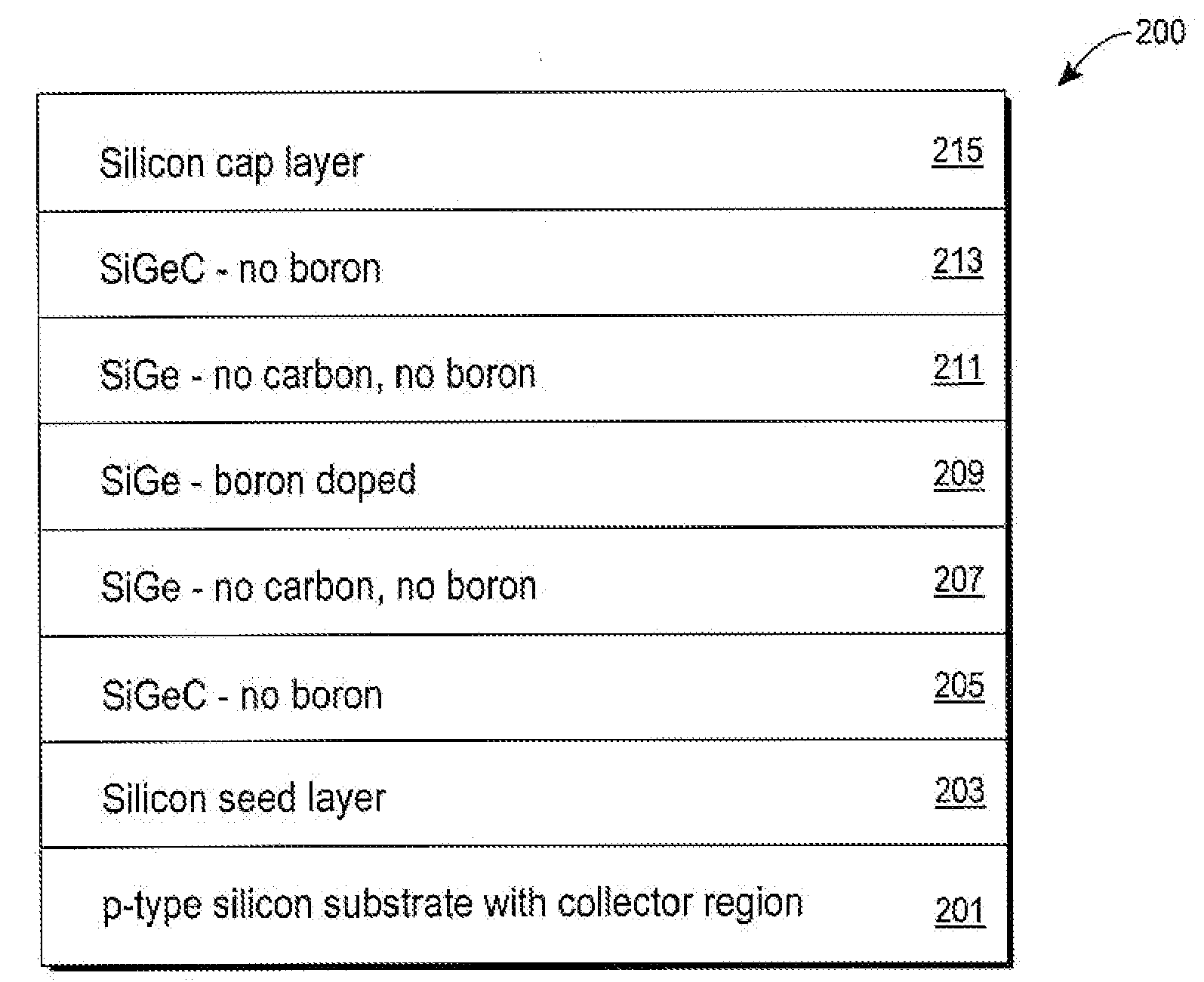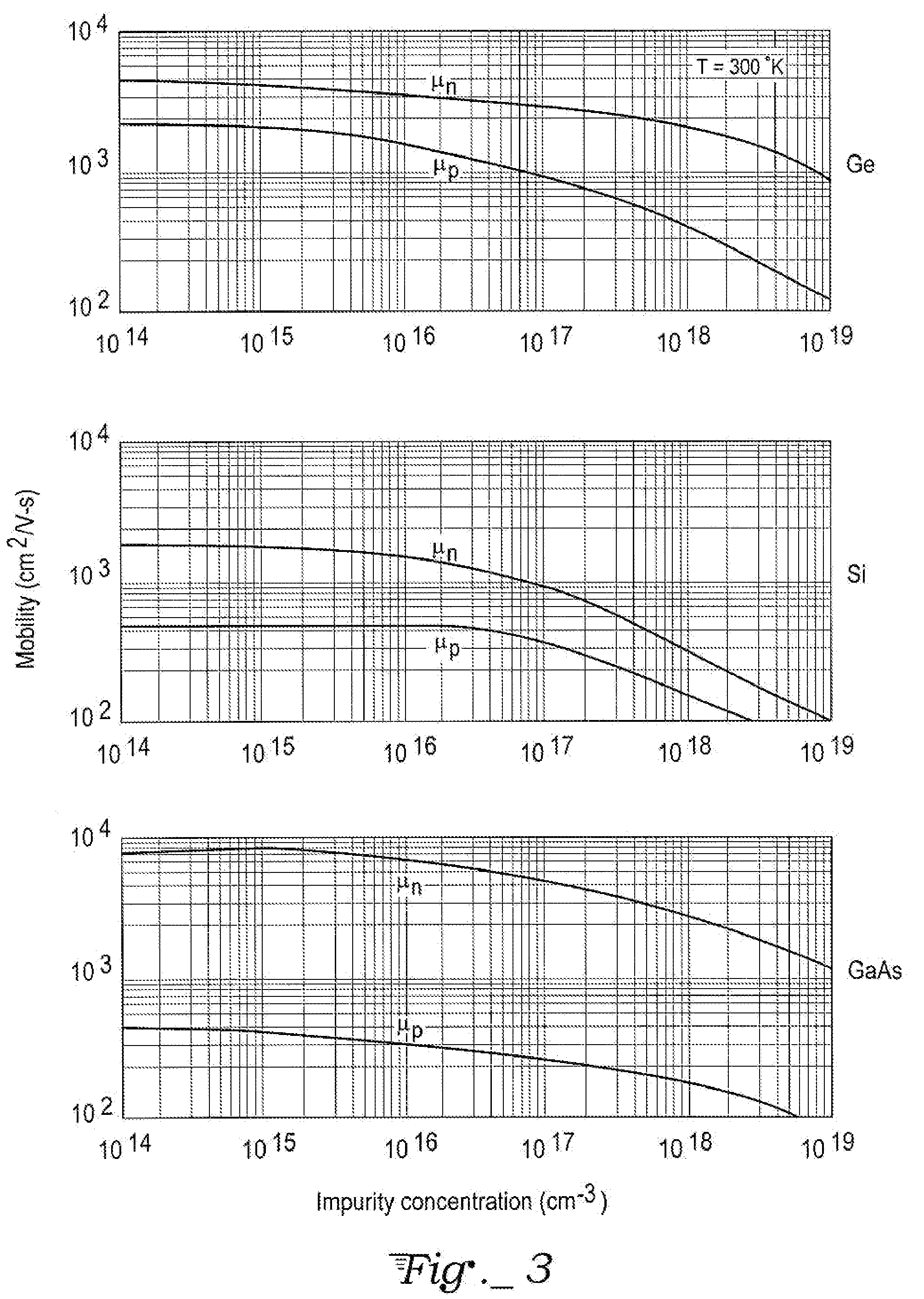Hetrojunction bipolar transistor (HBT) with periodic multilayer base
a bipolar transistor and heterojunction technology, applied in the direction of basic electric elements, electrical equipment, semiconductor devices, etc., can solve the problem of increasing the difficulty of maintaining an fsub>max/sub>/fsub>t /sub>ratio greater than 1.0
- Summary
- Abstract
- Description
- Claims
- Application Information
AI Technical Summary
Benefits of technology
Problems solved by technology
Method used
Image
Examples
Embodiment Construction
[0030]Critical shortcomings in the prior art exist that must be overcome to realize further benefits of the advantages of SiGe HBTs. The following disclosure relates specifically to an npn-type SiGe HBT, but the principles involved also relates to pnp-type SiGe HBTs as well as HBTs made with other compound semiconductor materials (e.g., other Group III-V or II-VI materials). Additionally, technology and methods disclosed herein benefits other devices types such as, for example, metal oxide semiconductor field effect transistors (MOSFETs), high electron mobility transistors (HEMTs), high hole mobility transistors (HHMTs), bipolar junction transistors (BJTs), and FINFETs.
[0031]The periodic multi-layer (ML) and / or superlattice (SL) have been known for other applications for some time. However, the use of an ML in the base of a SiGe HBT represents a new utilization of this technology. The SL is a special case of an ML, in which layers that are chemically different from adjacent neighbor...
PUM
 Login to View More
Login to View More Abstract
Description
Claims
Application Information
 Login to View More
Login to View More - R&D
- Intellectual Property
- Life Sciences
- Materials
- Tech Scout
- Unparalleled Data Quality
- Higher Quality Content
- 60% Fewer Hallucinations
Browse by: Latest US Patents, China's latest patents, Technical Efficacy Thesaurus, Application Domain, Technology Topic, Popular Technical Reports.
© 2025 PatSnap. All rights reserved.Legal|Privacy policy|Modern Slavery Act Transparency Statement|Sitemap|About US| Contact US: help@patsnap.com



